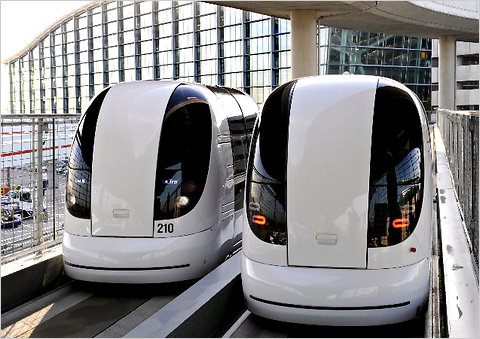An op-ed piece from the 9-8-08 Los Angeles Times:
Seeding the future with 'podcars'
Wasn't quite sure where to put this, but since it involves commuting, and podcars presumably run on rails of some sort, settled on this forum.
The paper itself includes a rendition of overhead podcars in downtown L.A. which is missing online. The graphic kinda gives the lie to the author's assertion that "the small scale of podcar guideways makes them unobtrusive over city streets and sidewalks."

ULTra at London's Heathrow airport.
Seeding the future with 'podcars'
Wasn't quite sure where to put this, but since it involves commuting, and podcars presumably run on rails of some sort, settled on this forum.
The paper itself includes a rendition of overhead podcars in downtown L.A. which is missing online. The graphic kinda gives the lie to the author's assertion that "the small scale of podcar guideways makes them unobtrusive over city streets and sidewalks."

ULTra at London's Heathrow airport.





